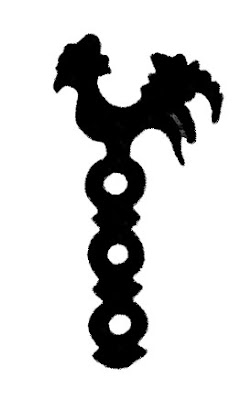
The Encyclopaedia of the Coins of Malaysia, Singapore and Brunei 1400-1986 by Saran Singh.
The book was first published in 1986 and was re-printed in 1996. This book is now a collector's item due to limited number of print.
The book was first published in 1986 and was re-printed in 1996. This book is now a collector's item due to limited number of print.
In the 2nd. Edition (1996) of the encyclopaedia page 260, the author referred the cockerel perched on rings as Animal Money. For the purpose of this blog (and my forthcoming book entitled The Forgotten Tin Ring Currency of The Malay Peninsula), all items with rings, with or without animal figure will be referred as Ring Currency. This shall include tin cockerel perched on rings presented in the encyclopaedia as item SS20a, SS20b and SS20c in page 260.
Ring Currency with animal figure will also be referred as Animal Ring Money. The rationale for this is that although there are Ring Currency items with animal figure in their designs, there are also types that come without animal figure. If these items are to be categorized as Animal Currency then this will result in the omission of those without animal figure from the definition. This will lead to a weak and confusing definition to the term Ring Currency as to whether it should include or omit types with animal figure since Animal Ring Currency can be categorized under both Animal Currency as well as Ring Currency.
The term Animal Currency or Animal Money in this blog refers to Animal Money and Animal Currency in general without limiting it to items deemed to originate from the Malay states of Perak and Selangor as listed in the 2nd. Edition of The Encyclopaedia of the Coins of Malaysia, Singapore and Brunei 1400-1986 in page 200 - 205. The listing may indirectly implies that Animal Currency and Animal Money was issued only by Perak and Selangor, that is, assuming that the listing is accurate. It is important that this limiting perception is removed because there are strong evidences to suggest that this currency was also issued and used by other states on the Malay Peninsula.




No comments:
Post a Comment